Healthy gut diet plan is the key to unlocking better digestion, stronger immunity, and improved overall wellness. At the heart of your body’s health is your gut, a complex system that does more than just process food—it’s the command center for many vital functions, including your mood, energy, and even skin clarity.
Healthy gut diet plan focuses on nourishing the trillions of beneficial microbes living in your gut, known as the gut microbiome. This ecosystem plays a major role in maintaining balance throughout the body. A thriving microbiome helps fight inflammation, supports mental clarity, and enhances nutrient absorption.
Healthy gut diet plan includes foods rich in fiber, fermented ingredients like yogurt and kimchi, and natural prebiotics such as bananas and garlic. These choices help maintain a balanced gut environment, supporting long-term health and protecting against digestive discomfort, fatigue, and weakened immunity. A nourished gut truly is the foundation of well-being.
A healthy gut isn’t just about avoiding constipation or bloating—it’s about creating balance in your microbiome that boosts everything from nutrient absorption to mental clarity. A poorly functioning gut can lead to chronic inflammation, depression, fatigue, skin problems, and autoimmune diseases.
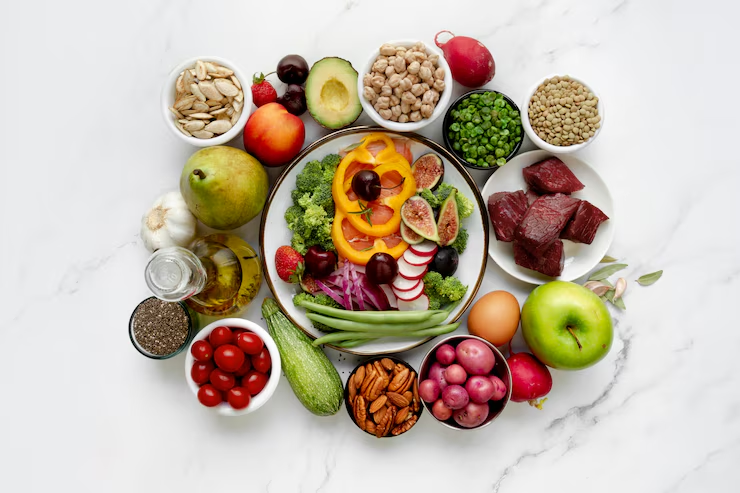
How is Gut Health Formed ?
Healthy gut diet plan begins its importance from the moment you’re born. Whether you were delivered naturally or via C-section plays a role in shaping your gut microbiome. A natural birth typically introduces beneficial bacteria from the mother, giving babies a stronger start in developing a balanced gut. As you grow, diet, environment, and lifestyle continue to influence this delicate internal ecosystem.
Healthy gut diet plan becomes even more essential as you age. The foods you consume, the air you breathe, your exposure to germs, and how often you take antibiotics or other medications all affect the diversity of your gut bacteria. High stress and poor sleep can also disrupt this balance, weakening your immune system and affecting digestion and mental clarity.
Healthy gut diet plan helps restore and maintain this bacterial balance. By incorporating fiber, fermented foods, and prebiotics, you support the good microbes that protect and power your overall health.
Why Focus on a Healthy Gut Diet ?
Because the gut affects more than digestion:
70% of your immune system resides in your gut.
The gut produces 95% of serotonin, the “happy hormone.”
A healthy gut supports weight management, hormone balance, and mental health.
When Should You Start ?
Healthy gut diet plan is your starting point for true wellness. Whether you’re dealing with bloating, food sensitivities, low energy, or dull skin, your gut health plays a major role. A balanced gut can help reduce inflammation, improve digestion, and restore your natural glow from the inside out.
Healthy gut diet plan doesn’t work overnight, but your body begins to respond quickly when you feed it the right way. Consistency is key—choosing gut-friendly foods day after day builds a strong foundation for healing. Your gut lining can regenerate, and beneficial bacteria can grow when properly nourished.
Healthy gut diet plan includes fiber-rich vegetables, fermented foods like kefir and sauerkraut, and prebiotics found in garlic, onions, and bananas. Avoiding ultra-processed foods and added sugars also helps. With time and dedication, your gut will reward you with better digestion, clearer skin, improved focus, and a stronger immune system.
How Can a Diet Help Your Gut ?
Healthy gut diet plan plays a powerful role in improving your gut health by supporting the balance of good bacteria in your digestive system. The foods you eat directly influence your microbiome, which affects digestion, immunity, mood, and overall health. A poor diet can lead to an overgrowth of harmful bacteria, causing issues like bloating, fatigue, and inflammation.
Healthy gut diet plan helps nourish the beneficial microbes that keep your digestive system running smoothly. Foods rich in fiber, such as fruits, vegetables, legumes, and whole grains, act as fuel for these bacteria. Fermented foods like yogurt, kefir, and kimchi introduce helpful probiotics, while prebiotic foods like garlic and onions help them thrive.
Healthy gut diet plan also reduces gut irritants like processed foods, artificial sweeteners, and excessive sugar, which can disrupt the microbiome. By consistently eating gut-friendly foods, you support a healthy digestive environment and improve your overall well-being.
Food is medicine. A gut-healing diet:
Feeds good bacteria (probiotics and prebiotics).
Reduces inflammation.
Repairs the gut lining.
Enhances nutrient absorption.
Top Tips for a Healthy Gut Diet Plan
Incorporate Probiotic-Rich Foods Daily
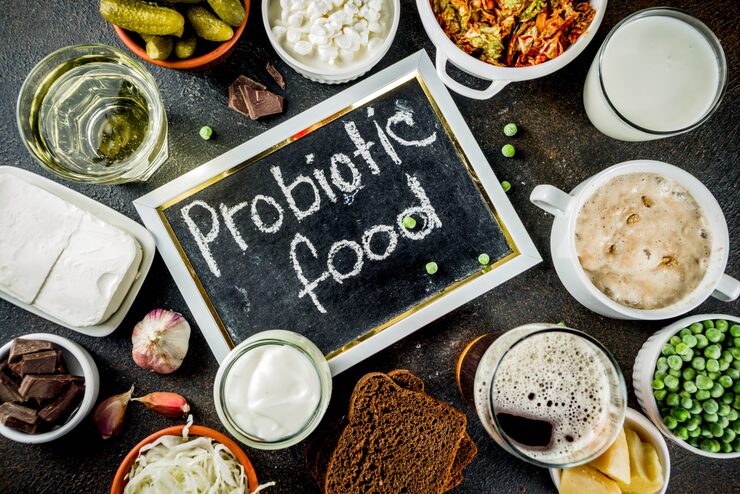
Healthy gut diet plan encourages the daily inclusion of probiotic-rich foods to support digestion and overall wellness. Probiotics are live, beneficial bacteria that help maintain a healthy balance in your gut microbiome. When consumed regularly, they can improve digestion, reduce bloating, and strengthen your immune system.
Healthy gut diet plan includes natural sources of probiotics such as yogurt, kefir, sauerkraut, kimchi, miso, and kombucha. These fermented foods replenish your gut with good bacteria, helping to crowd out harmful microbes. They also aid in the production of nutrients like vitamin K and certain B vitamins, which are essential for energy and brain function.
Healthy gut diet plan works best when probiotic-rich foods are combined with prebiotics—fibers that feed good bacteria. This combination promotes a thriving microbiome and better digestive health. Making probiotics a regular part of your meals is a simple yet powerful step toward healing your gut and improving overall health.
What Are Probiotics ?
Probiotics are live bacteria that boost the health of your gut microbiome by increasing the population of beneficial bacteria.
Top Probiotic Foods:
Yogurt (with live cultures)
Kefir
Kimchi
Sauerkraut
Miso
Tempeh
Pickles (fermented in brine)
Kombucha
Benefits:
Enhances digestion
Reduces bloating and gas
Strengthens immunity
May improve mood and skin health
How to Use:
Start your morning with kefir or yogurt. Add kimchi or sauerkraut as a side dish. Drink kombucha instead of sugary soda.
Add Prebiotic Fiber to Feed Good Bacteria
Healthy gut diet plan focuses not only on adding probiotics but also on feeding them with prebiotic fiber. Prebiotics are non-digestible fibers that serve as food for the beneficial bacteria in your gut. Without enough prebiotics, those good microbes can’t thrive, and your digestive health may suffer.
Healthy gut diet plan includes prebiotic-rich foods such as garlic, onions, leeks, asparagus, bananas, oats, and apples. These foods travel through your digestive tract without being broken down, reaching the colon where they fuel the growth of healthy bacteria. As these microbes ferment the fiber, they produce short-chain fatty acids that reduce inflammation and support gut lining health.
Healthy gut diet plan recommends combining prebiotics with probiotics for maximum impact. This powerful duo helps balance your microbiome, improving digestion, immunity, and even mood. Adding prebiotic fiber to your meals daily is a natural and effective way to nourish your gut from the inside out.
What Are Prebiotics ?
Prebiotics are types of dietary fiber that feed your good gut bacteria, helping them thrive.
Prebiotic-Rich Foods:
Garlic
Onions
Leeks
Asparagus
Bananas (especially green)
Apples (with skin)
Chicory root
Jerusalem artichokes
Benefits:
Increases beneficial bacteria
Enhances calcium absorption
Supports regular bowel movements
Reduces inflammation
How to Use: Add garlic and onions to your cooking. Eat bananas and apples as snacks. Make soups with leeks and asparagus.
Stay Hydrated with Gut-Friendly Fluids
Healthy gut diet plan emphasizes the importance of staying hydrated with gut-friendly fluids to support digestion and overall gut function. Water plays a key role in breaking down food and helping nutrients absorb properly, while also flushing out toxins and waste from the digestive system.
Healthy gut diet plan encourages drinking plenty of plain water throughout the day, but also suggests adding hydrating options like herbal teas, bone broth, and coconut water. These fluids are not only soothing to the digestive tract but may also contain nutrients and electrolytes that support gut health. For instance, ginger or peppermint tea can help reduce bloating and ease digestive discomfort.
Healthy gut diet plan warns against sugary drinks, sodas, and artificial sweeteners, which can upset the gut microbiome. Prioritizing clean, hydrating fluids supports the natural movement of your digestive system, aids in regular bowel function, and helps create a healthy environment for beneficial bacteria to thrive.
Why Water Matters: Water helps break down food, aids in nutrient absorption, and supports healthy bowel movements.
Gut-Healing Hydration Options:
Water with lemon
Bone broth
Herbal teas (peppermint, ginger, fennel)
Aloe vera juice (in moderation)
Benefits:
Prevents constipation
Flushes out toxins
Improves digestion and gut lining
How to Use: Aim for at least 8–10 glasses of water daily. Sip on warm ginger tea after meals to aid digestion.
Eliminate or Minimize Processed Foods and Sugar
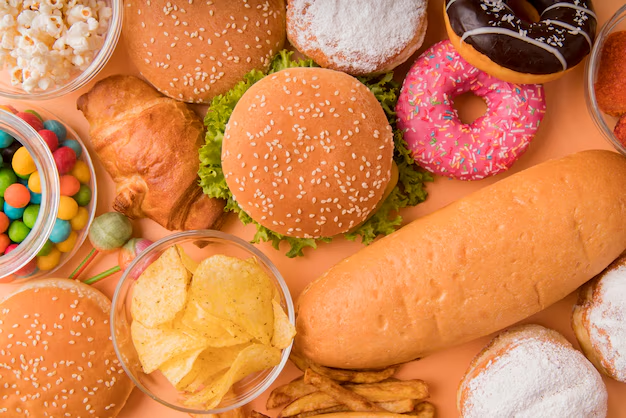
Healthy gut diet plan strongly advises eliminating or minimizing processed foods and added sugars to restore gut balance and promote overall health. Highly processed foods are often loaded with artificial additives, unhealthy fats, and refined sugars that can disrupt the gut microbiome, allowing harmful bacteria to thrive.
Healthy gut diet plan focuses on whole, natural foods like fresh vegetables, fruits, legumes, and lean proteins. By avoiding processed snacks, sugary cereals, sodas, and ready-to-eat meals, you reduce inflammation and support the growth of beneficial gut bacteria. Excess sugar, in particular, feeds harmful microbes and yeasts, which can lead to digestive issues, fatigue, and a weakened immune system.
Healthy gut diet plan isn’t about strict deprivation but making smarter, consistent choices. Gradually replacing processed foods with healthier alternatives can improve digestion, reduce bloating, and help rebalance your gut flora. Your body will feel the difference with clearer skin, better energy, and stronger immunity.
Why It’s Critical:
Processed foods and sugar feed harmful gut bacteria and yeast, leading to dysbiosis (imbalance).
Common Gut Disruptors:
Artificial sweeteners
Preservatives
Processed oils (canola, vegetable)
Refined sugars
Fast food and fried foods
Benefits of Removing Them:
Reduces inflammation
Balances gut flora
Improves mood and focus
Helps with weight loss
How to Replace Them: Switch sugary snacks with fruit and nuts. Use natural sweeteners like honey or dates. Cook meals from whole ingredients.
Eat Diverse, Colorful Whole Foods
Healthy gut diet plan encourages eating a wide variety of colorful whole foods to nourish your gut microbiome. Different plant-based foods provide unique types of fiber, antioxidants, and phytonutrients, all of which support a diverse and balanced gut environment. The more variety you include in your meals, the more beneficial bacteria you help cultivate.
Healthy gut diet plan recommends filling your plate with colorful fruits, vegetables, whole grains, legumes, nuts, and seeds. Each color represents different nutrients—red tomatoes, orange carrots, green spinach, and purple cabbage all offer specific compounds that promote gut and overall health. A diverse diet helps reduce inflammation, supports digestion, and strengthens immunity.
Healthy gut diet plan also emphasizes rotating your food choices to avoid overdependence on a single food type. This not only prevents nutrient gaps but also encourages microbial diversity, which is key to a resilient digestive system. A colorful plate means a thriving gut.
Why Diversity Matters: Different plant foods feed different types of gut bacteria. A variety of fruits, vegetables, grains, and legumes leads to a diverse microbiome.
Colorful Gut-Boosting Foods:
Berries, oranges, greens, beets
Whole grains like oats, quinoa, brown rice
Legumes: lentils, chickpeas, black beans
Benefits:
Increases microbial diversity
Provides essential vitamins and antioxidants
Supports gut lining repair
Reduces risk of chronic diseases
How to Use: Aim for 30+ different plant-based foods per week. Create rainbow salads, smoothie bowls, or grain-based Buddha bowls.
Include Omega-3 Fatty Acids
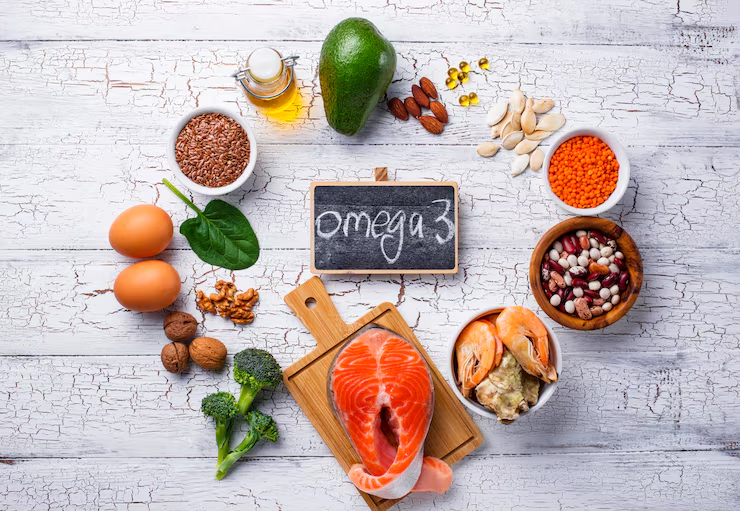
Healthy gut diet plan includes omega-3 fatty acids as a key component for reducing inflammation and supporting a balanced gut microbiome. These essential fats help strengthen the gut lining, improve digestion, and promote the growth of beneficial bacteria, which are all vital for long-term gut health.
Healthy gut diet plan recommends omega-3-rich foods such as fatty fish (like salmon, mackerel, and sardines), flaxseeds, chia seeds, walnuts, and hemp seeds. These foods not only support gut function but also contribute to heart health, brain function, and reduced risk of chronic diseases. Including them regularly in your meals can help combat gut inflammation and discomfort.
Healthy gut diet plan also suggests balancing omega-3 intake with lower consumption of omega-6 fats found in processed oils and fried foods. This balance helps maintain a healthier gut environment, improve your mood, and support immunity—making omega-3s a simple but powerful tool in gut healing.
Why Omega-3s Help:
Omega-3s reduce gut inflammation and support the integrity of the intestinal lining.
Best Sources:
Fatty fish (salmon, sardines, mackerel)
Chia seeds
Flaxseeds
Walnuts
Hemp seeds
Benefits:
Fights gut inflammation
Supports healthy bacteria
May help reduce symptoms of IBS
How to Use: Add flaxseeds to your morning smoothie. Eat salmon twice a week. Sprinkle chia on yogurt or oats.
Practice Mindful Eating and Chew Thoroughly
Healthy gut diet plan goes beyond food choices—it also emphasizes how you eat. Practicing mindful eating and chewing thoroughly can significantly improve digestion and gut health. When you eat slowly and without distractions, your body has time to recognize hunger and fullness cues, helping prevent overeating and digestive stress.
Healthy gut diet plan encourages chewing each bite well to break down food properly before it reaches the stomach. Thorough chewing mixes food with saliva, which contains enzymes that begin the digestion process. This reduces the workload on your stomach and intestines, allowing nutrients to absorb more efficiently and minimizing issues like bloating or gas.
Healthy gut diet plan also highlights the importance of a calm eating environment. Stress can hinder digestion, so sitting down, relaxing, and savoring your meals can promote better gut function. Mindful eating is a simple yet effective habit to support a healthier, happier digestive system.
Why It Matters: Digestion starts in the mouth. Chewing properly breaks food down, easing the digestive burden on the gut.
How to Practice:
Chew each bite 20–30 times.
Avoid distractions (phones, TV) while eating.
Eat slowly to signal fullness.
Benefits:
Improves digestion and nutrient absorption
Reduces bloating and gas
Helps prevent overeating
How to Start: Put your fork down between bites. Practice eating one meal mindfully each day. Focus on taste, texture, and aroma.
Limit Antibiotics and Non-Essential Medications
Healthy gut diet plan emphasizes not just what you eat but also how lifestyle choices impact your gut. One key factor is the use of antibiotics and other non-essential medications. While antibiotics are sometimes necessary, overuse can wipe out both harmful and beneficial bacteria, disrupting the balance of your gut microbiome.
Healthy gut diet plan recommends using medications only when truly needed and under medical guidance. Non-essential drugs like antacids, painkillers, and certain over-the-counter medications may also affect gut health by altering stomach acid levels or harming microbial diversity. Limiting their use can help preserve the natural balance of your digestive system.
Healthy gut diet plan supports your gut’s recovery by including probiotic and prebiotic foods that help rebuild healthy bacteria after medication use. By being mindful of how often you take antibiotics or other drugs, and pairing that awareness with a nourishing diet, you can protect and restore your gut health naturally.
Why Antibiotics Hurt Gut Health: Antibiotics wipe out both good and bad bacteria, causing imbalance and long-term digestive issues.
Other Gut-Affecting Drugs:
NSAIDs (ibuprofen, aspirin)
Acid blockers
Birth control pills
Benefits of Minimizing Medication:
Preserves gut flora balance
Prevents yeast overgrowth
Supports immune resilience
What to Do Instead: Always take probiotics during and after antibiotic use. Consult your doctor for alternatives or supplements to support your gut while on medications.
Sample Healthy Gut Diet Plan (1-Day Menu)
Here’s your healthy gut diet plan in table format:
| Meal | Foods Included |
|---|---|
| Breakfast | Greek yogurt with chia seeds, blueberries, and flax |
| Green banana smoothie with spinach and almond milk | |
| Lunch | Quinoa salad with chickpeas, tomatoes, red cabbage, lemon-olive oil dressing |
| Sauerkraut on the side | |
| Snack | Apple with almond butter |
| Herbal tea (peppermint) | |
| Dinner | Grilled salmon with asparagus and sweet potato |
| Miso soup or bone broth | |
| Before Bed | Kefir shot or a small glass of kombucha |
This healthy gut diet plan provides probiotics, prebiotics, fiber, omega-3s, and nutrient-rich whole foods to support digestion and microbiome balance.
Conclusion
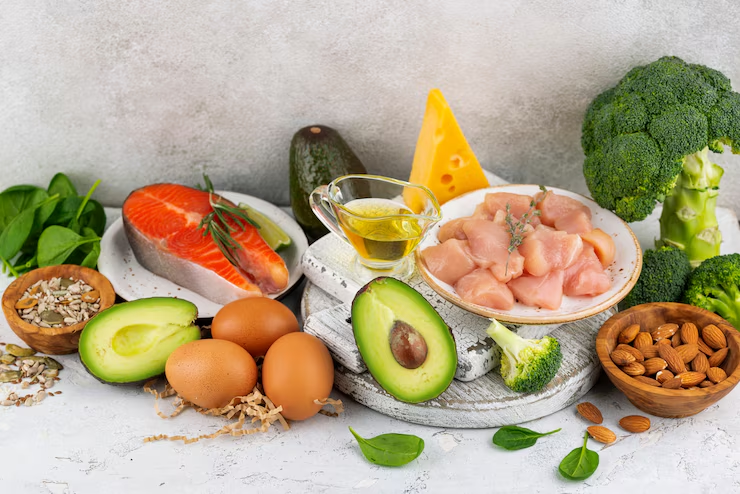
Healthy gut diet plan is your pathway to healing from the inside out. A nourished and balanced gut influences nearly every aspect of your health—from digestion and immunity to energy levels, skin clarity, and even mental focus. When your gut thrives, your whole body functions more efficiently and feels better every day.
Healthy gut diet plan doesn’t require drastic changes. Start small and stay consistent. Focus on adding fiber-rich foods, probiotics, and prebiotics to your meals. Drink plenty of gut-friendly fluids, chew thoroughly, and reduce processed foods. These simple actions help rebalance your gut microbiome and support your body’s natural healing process.
Healthy gut diet plan is most effective when integrated slowly. Begin by incorporating one or two gut-supportive habits each week, such as adding sauerkraut to your lunch or swapping sugary drinks for herbal teas. Over time, you’ll notice better digestion, more energy, improved mood, and a stronger immune system—naturally.
FAQs
Q1. What is a healthy gut diet plan ?
A healthy gut diet plan is a nutrition-focused approach that includes foods rich in fiber, probiotics, and prebiotics to support a balanced gut microbiome. It avoids processed foods, excess sugar, and artificial additives that can harm gut health.
Q2. How long does it take to see results from a healthy gut diet plan ?
Most people begin to notice improvements in digestion, energy, and mood within a few weeks of following a healthy gut diet plan, especially when they stay consistent with gut-friendly food and lifestyle choices.
Q3. Can a healthy gut diet plan help with bloating and gas ?
Yes, a healthy gut diet plan can significantly reduce bloating, gas, and other digestive discomforts by supporting the growth of beneficial bacteria and improving nutrient absorption.
Q4. Are probiotics necessary in a healthy gut diet plan ?
Probiotics are a beneficial part of a healthy gut diet plan because they help restore and maintain a balanced gut microbiome. Natural sources include yogurt, kefir, and fermented vegetables.
Q5. What foods should I avoid in a healthy gut diet plan ?
A healthy gut diet plan limits processed foods, refined sugars, artificial sweeteners, and excessive alcohol—these can disrupt gut bacteria and lead to inflammation and poor digestion.


